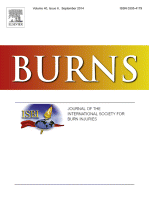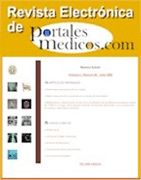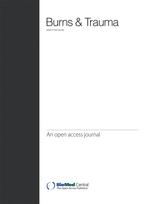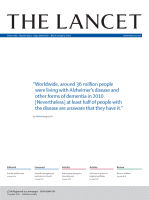Cox, S. G; Martinez, R; Glick, A; Numanoglu, A; Rode, H.
Burns, 2015-12-01, Volúmen 41, Número 8, Pages 1805-1810
 This study was a component of a broader review to evaluate burn care in South Africa. A prospective audit of 353 children with thermal injuries admitted to the Red Cross War Memorial Children’s Hospital in Cape Town was performed during 2012/2013. The audit was based to assess the adherence of initial burn management to the provincial policy guidelines on the clinical management of the burn wound. The community management of each patient prior to admission to a burns centre was assessed for the following: basic demographics, emergency home management, wound cover, analgesia and transport to medical facilities.
This study was a component of a broader review to evaluate burn care in South Africa. A prospective audit of 353 children with thermal injuries admitted to the Red Cross War Memorial Children’s Hospital in Cape Town was performed during 2012/2013. The audit was based to assess the adherence of initial burn management to the provincial policy guidelines on the clinical management of the burn wound. The community management of each patient prior to admission to a burns centre was assessed for the following: basic demographics, emergency home management, wound cover, analgesia and transport to medical facilities.
 Las infecciones constituyen actualmente, la principal amenaza vital en los pacientes tras una agresión térmica severa, siendo la principal causa de morbi-mortalidad de estos. La incidencia de infección en los pacientes quemados varía mucho de unas unidades de quemados a otras, y se halla claramente asociada al porcentaje de superficie corporal quemada (SCQ). Se realizó un estudio retrospectivo de 107 pacientes ingresados en la unidad de quemados del Hospital Hermanos Ameijeiras en el período de enero de 2006 hasta diciembre 2008, con el diagnóstico de quemaduras, los que fueron estratificados según el porcentaje de SCQ.
Las infecciones constituyen actualmente, la principal amenaza vital en los pacientes tras una agresión térmica severa, siendo la principal causa de morbi-mortalidad de estos. La incidencia de infección en los pacientes quemados varía mucho de unas unidades de quemados a otras, y se halla claramente asociada al porcentaje de superficie corporal quemada (SCQ). Se realizó un estudio retrospectivo de 107 pacientes ingresados en la unidad de quemados del Hospital Hermanos Ameijeiras en el período de enero de 2006 hasta diciembre 2008, con el diagnóstico de quemaduras, los que fueron estratificados según el porcentaje de SCQ. La cobertura rápida y eficaz de las lesiones es un factor limitante en el tratamiento de grandes quemados. Los autoinjertos siguen siendo el tratamiento de elección pero no están exentos de riesgos. El uso de sustitutos de piel cultivada (SPC) puede llegar a reducir la morbilidad implícita en el uso de autoinjertos.
La cobertura rápida y eficaz de las lesiones es un factor limitante en el tratamiento de grandes quemados. Los autoinjertos siguen siendo el tratamiento de elección pero no están exentos de riesgos. El uso de sustitutos de piel cultivada (SPC) puede llegar a reducir la morbilidad implícita en el uso de autoinjertos. Quality of life and functional recovery after burn injury is the final goal of burn care, especially as most of burn patients survive the injury due to advanced medical science. However, dysfunction, disfigurement, contractures, psychological problems and other discomforts due to burns and the consequent scars are common, and physical therapy and occupational therapy provide alternative treatments for these problems of burn patients.
Quality of life and functional recovery after burn injury is the final goal of burn care, especially as most of burn patients survive the injury due to advanced medical science. However, dysfunction, disfigurement, contractures, psychological problems and other discomforts due to burns and the consequent scars are common, and physical therapy and occupational therapy provide alternative treatments for these problems of burn patients. Outcomes of patients with burns have improved substantially over the past two decades. Findings from a 2012 study in The Lancet showed that a burn size of more than 60% total body surface area burned (an increase from 40% a decade ago) is associated with risks and mortality. Similar data have been obtained in adults and elderly people who have been severely burned. We discuss recent and future developments in burn care to improve outcomes of children.
Outcomes of patients with burns have improved substantially over the past two decades. Findings from a 2012 study in The Lancet showed that a burn size of more than 60% total body surface area burned (an increase from 40% a decade ago) is associated with risks and mortality. Similar data have been obtained in adults and elderly people who have been severely burned. We discuss recent and future developments in burn care to improve outcomes of children. Silver is a naturally occurring element. Similar to other metals, the ionized form of silver (Ag +1 ) has known antimicrobial properties. A number of wound dressings incorporating silver ion or silver compounds have recently been developed and marketed. In addition, the antimicrobial effects of silver are currently being promoted in consumer products such as clothing and household appliances. The present use of silver in medical and consumer products has prompted concerns for potential toxicity and ecological effects, including induction of microbial resistance to antibiotics. These concerns ignore the fact that silver has been used for medicinal purposes for several thousand years.
Silver is a naturally occurring element. Similar to other metals, the ionized form of silver (Ag +1 ) has known antimicrobial properties. A number of wound dressings incorporating silver ion or silver compounds have recently been developed and marketed. In addition, the antimicrobial effects of silver are currently being promoted in consumer products such as clothing and household appliances. The present use of silver in medical and consumer products has prompted concerns for potential toxicity and ecological effects, including induction of microbial resistance to antibiotics. These concerns ignore the fact that silver has been used for medicinal purposes for several thousand years.






 Sitio web publicado el
Sitio web publicado el
Los lectores comentan